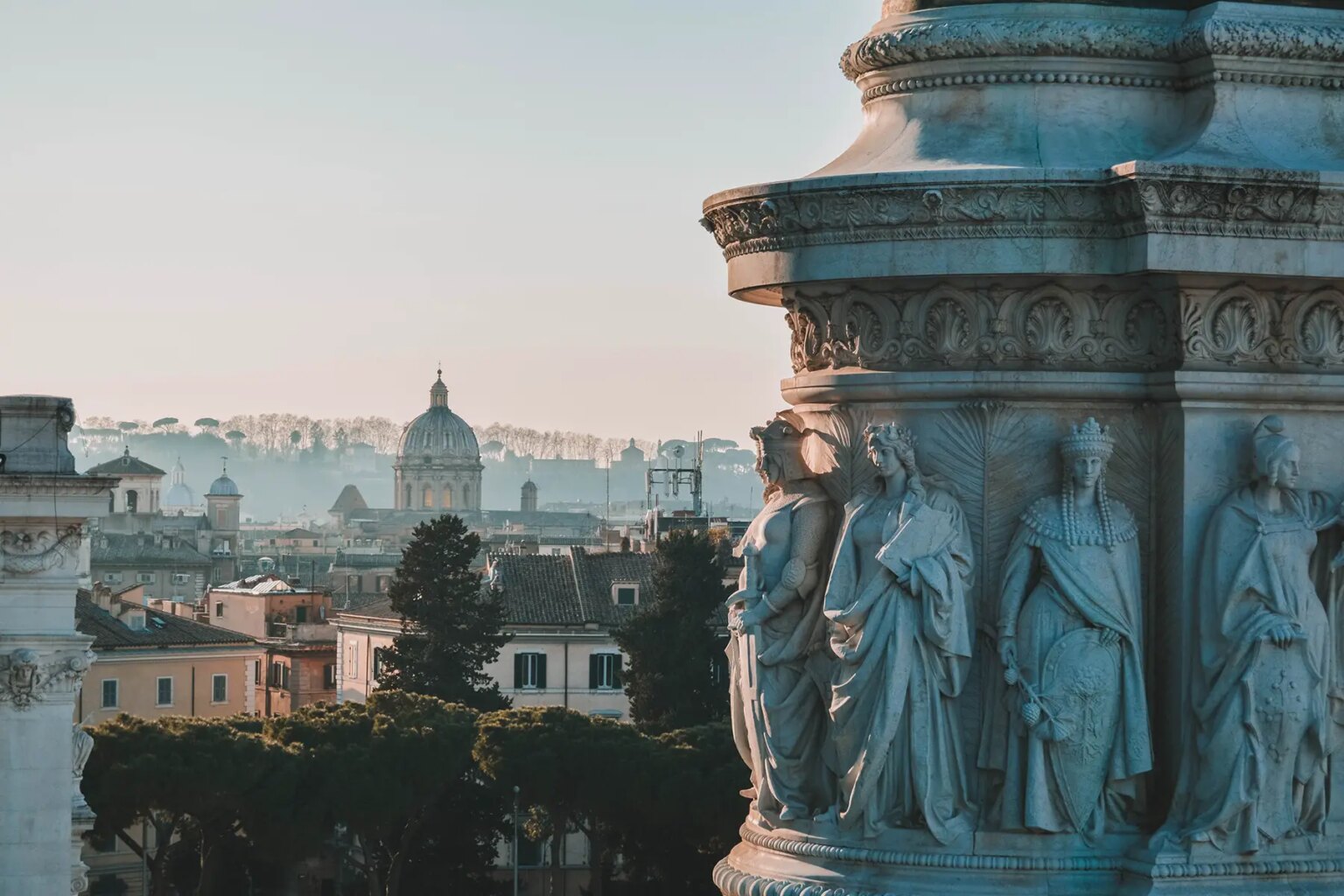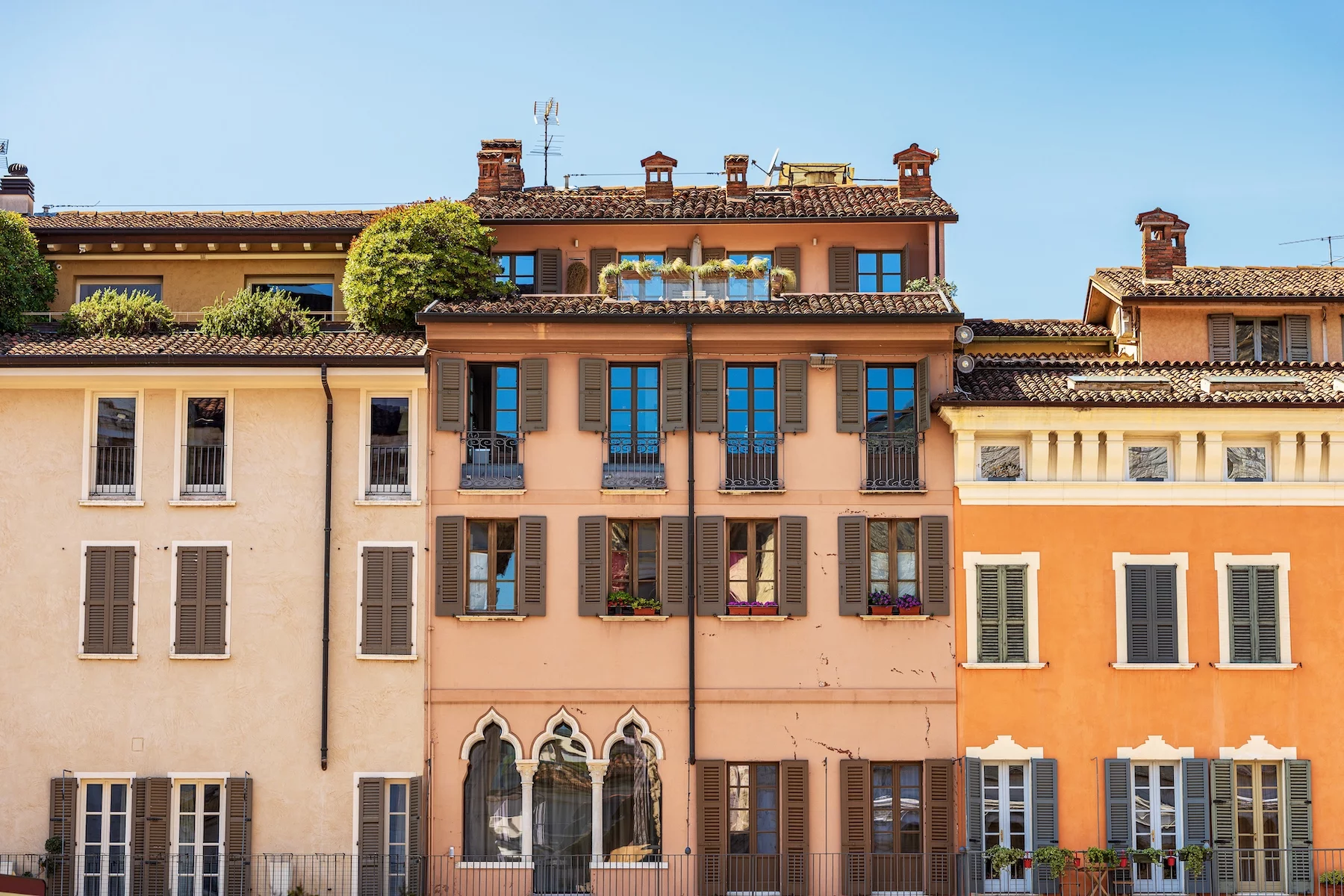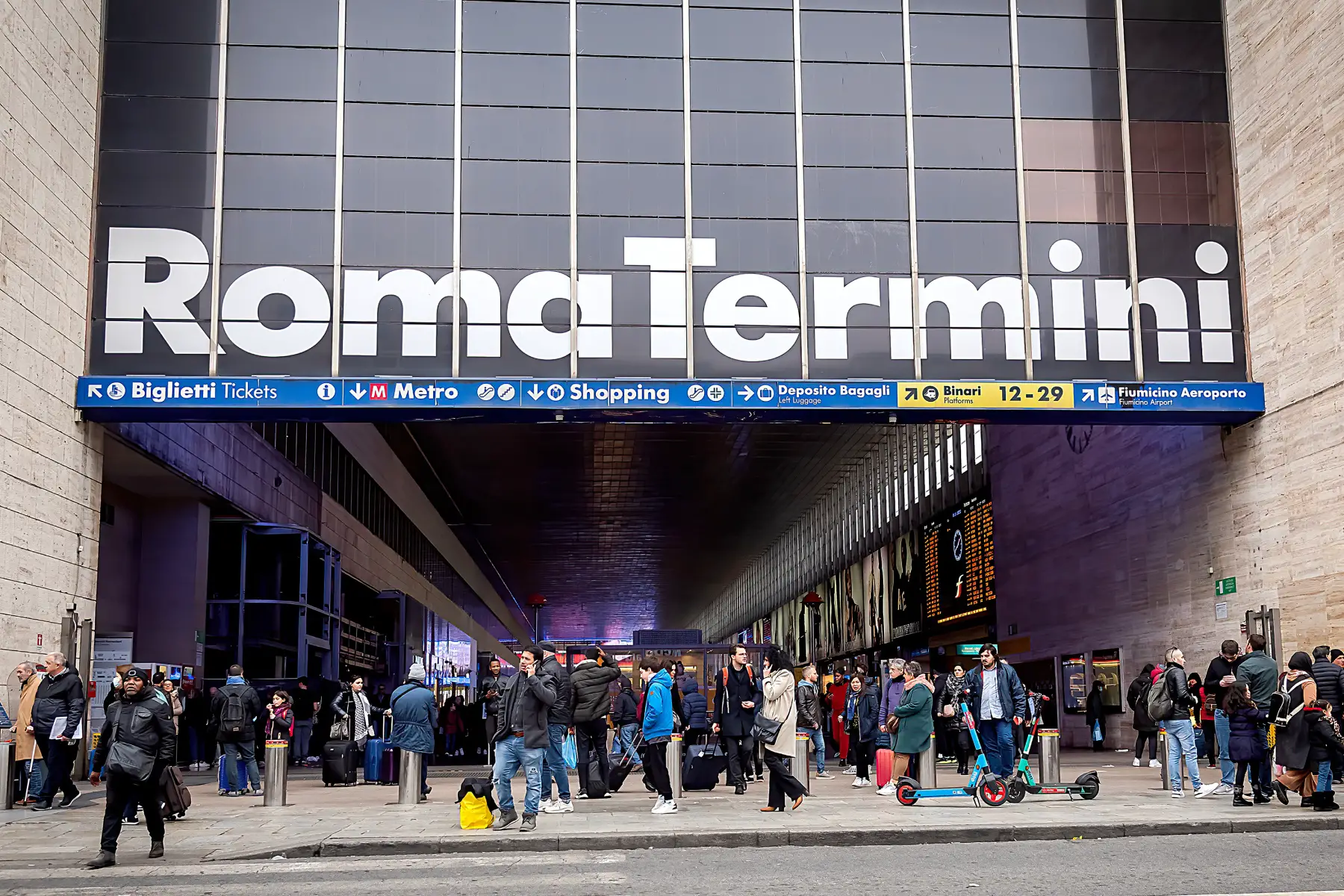Italy is a gorgeous country with small towns, big cities, and rural areas. There are so many places to choose from, but Rome, the capital, is a popular choice. Known as the Città Eterna or Eternal City, Rome (Roma) is like a real-life history book, with its ancient Roman monuments, museums, and unique buildings at every corner. Rome is also a modern business hot spot, political hub, and film capital. With a size of 1,285 square kilometers, it can be daunting to work out where to live in such a huge city.
Learn more about this charming metropolis and dive into the following topics:
Spotahome
Looking for somewhere to rent in Italy? Spotahome takes the hassle out of househunting by doing the hard work for you. Their online platform lets you find, view, and book rental properties all from the comfort of your own home. Take the stress out of househunting in Italy with Spotahome.
Rome overview
Rome is the capital of Italy, located in the Lazio Region in the middle of the country. It is among the oldest cities in Europe still occupied today. According to legend, Rome was founded in 753 BCE, and as you walk through the city its history is evident thanks to its museums, gorgeous buildings, and ancient ruins. In fact, the Colosseum is one of the world’s most visited monuments, with 7.5 million visitors (in Italian) in 2019.
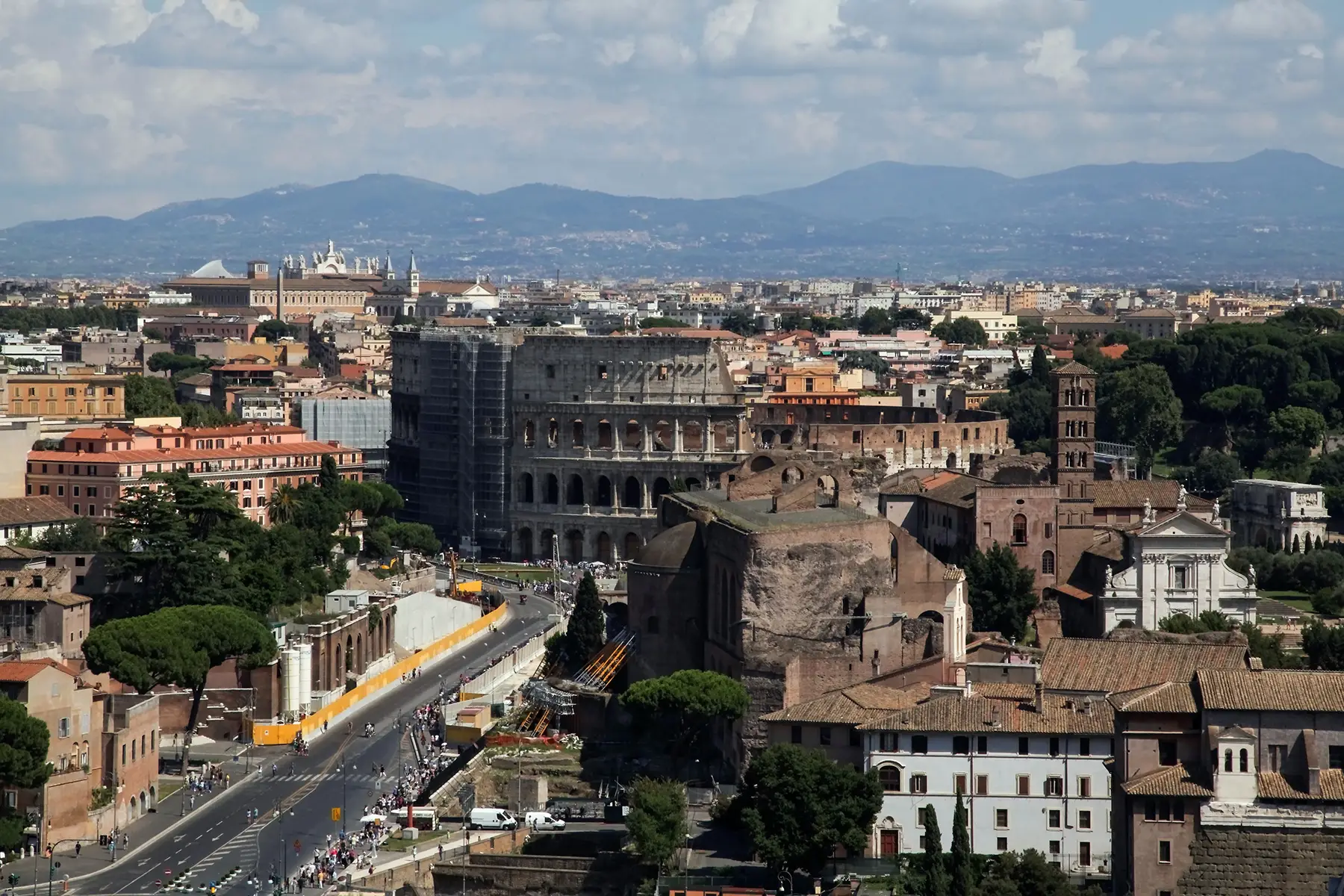
Rome’s population in 2022 was just over 4.2 million, and it has been decreasing in recent years. Italian financial newspaper Il Sole 24 Ore ranked it 31st for quality of life in its 2022 index – it scored particularly low for quality of life for young people due to high rents and unemployment (links in Italian). That said, Rome has a large global community, multiple international schools, and many events and groups for internationals.
Rome has an urban and metropolitan area, and there are 15 municipalities comprising 22 rioni (districts), 35 quartieri (neighborhoods), 6 suburbi (suburbs), and 53 zone (zones in the surrounding rural area).
Some parts of the city are more expensive than others – according to cost aggregator Numbeo, a single person can expect to spend around €1,900 per month, including rent. Housing in Rome can be costly, with rent varying from €900–3,500 per month (in Italian) depending on the neighborhood and size. Students spend an average of at least €800 per month, as they usually rent rooms instead of full apartments.
The Eternal City has multiple economic sectors, including tourism, banking, and publishing. The TV and movie industry is also an important part of Rome’s economy, as it is the heart of Italy’s media sector.
Although Rome does have an excellent quality of life, highly ranked schools, and a rich culture, the city has some problems with crime and administration. For example, Rome ranks fifth in Italy for crime in general but third for theft. In addition, in recent years, the city has had difficulty managing the garbage system.
How to find housing in Italy
Fortunately, there are many ways to find housing in Rome. You can either handle the house search yourself or contact a real estate agency (agenzia immobiliare) to guide you. These offices, located all over the city, can help you rent or buy an apartment, and they also aid students in finding rooms for shorter periods. In addition, you can find rentals or homes to purchase online through websites such as:
- Airbnb (for short-term and holiday rentals)
- HousingAnywhere
- Immobiliare
- Idealista
- Spotahome
- Subito
Typical accommodation in Italy
Accommodation in Rome varies depending on the area and budget. Most of the time, you will find apartments rather than stand-alone houses. The average Rome apartment (in Italian) is 103 square meters with an average value of €354,000. Also, apartments often include a small balcony rather than a terrace or large outdoor space.
Italians generally prefer to buy rather than rent, with almost 74% of Italians living in an owner-occupied home. Rome is in the Lazio region, where only 18% of the total population living in rented homes.
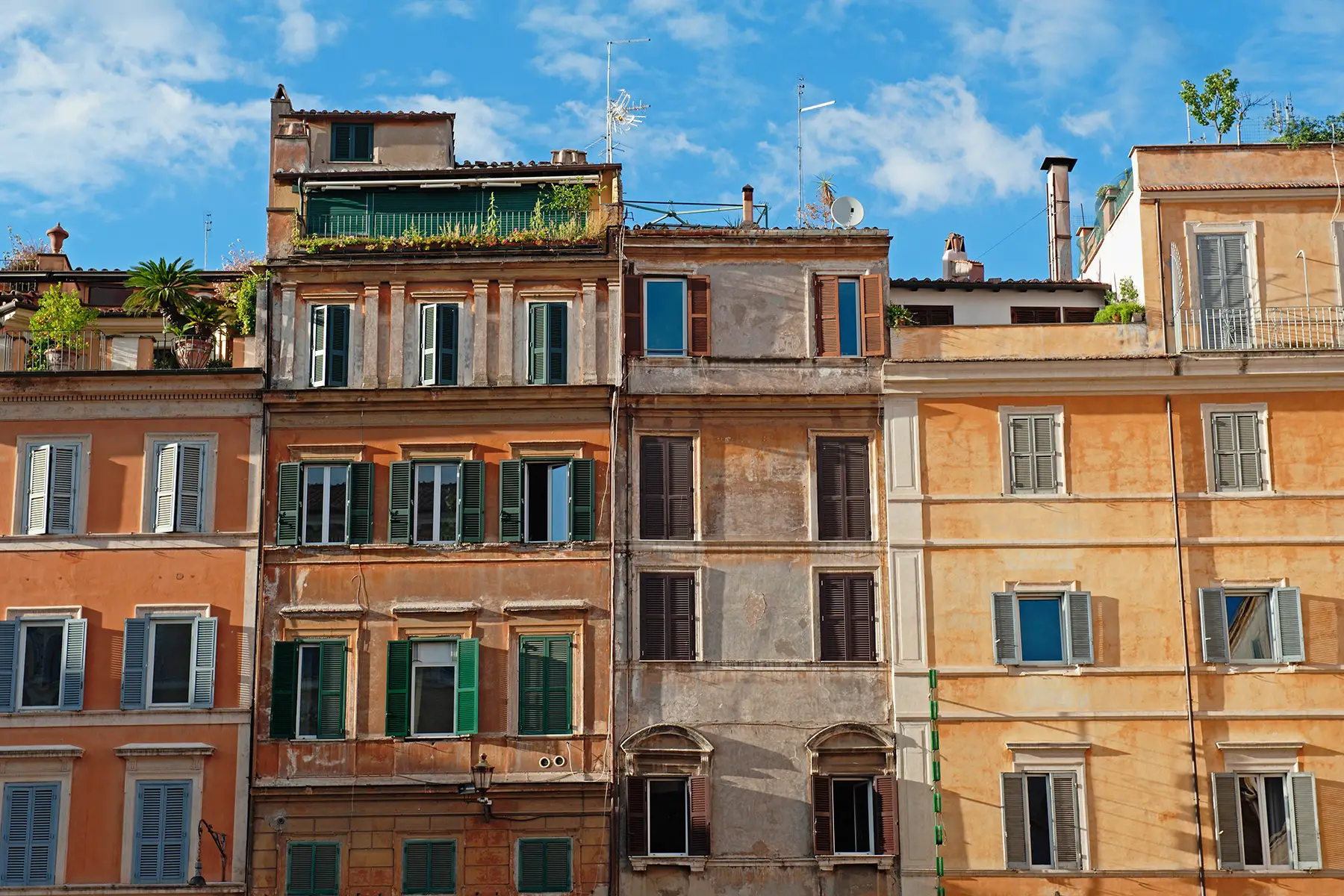
Renting in Rome
If you choose to rent an apartment or room, the market in Rome might seem daunting. There are not as many homes available to rent as there are to buy, so it can be competitive to secure a lease. Once you find an apartment online or through an agency, you will usually have to prove your income and make an offer.
The average cost of a 65m2 apartment in Rome is around €900 per month, depending on the neighborhood. For example, in city center, that apartment might cost you over €1,500, but in EUR, you might pay under €900.
Buying in Rome
If you’re looking for a more permanent place to live in Rome, it’s worth considering buying a home. The process of finding a home to purchase is similar to renting in Italy, as you can go through an agency or website. As of June 2022, the average cost to purchase a home was just over €3,300 per m2. Prices vary depending on the neighborhood and size.
Neighborhoods in Rome
Rome has many great areas to live in, but here are the best places to live in Rome based on safety, facilities, transportation, and quality of life:
Trastevere
If you want to find housing in Rome in one of the trendiest and most expat-friendly neighborhoods in the city, Trastevere might be perfect for you. Located on the west bank of the Tiber river, it’s central but has a village-style vibe thanks to its quaint, vibrant, and colorful buildings. The area is known for its food and has many famous Roman restaurants, such as Tonnarello.
While strolling through its cobbled streets, you will notice little shops, cafes, and more. There is always something to do in Trastevere, making it an appealing place to live and work.
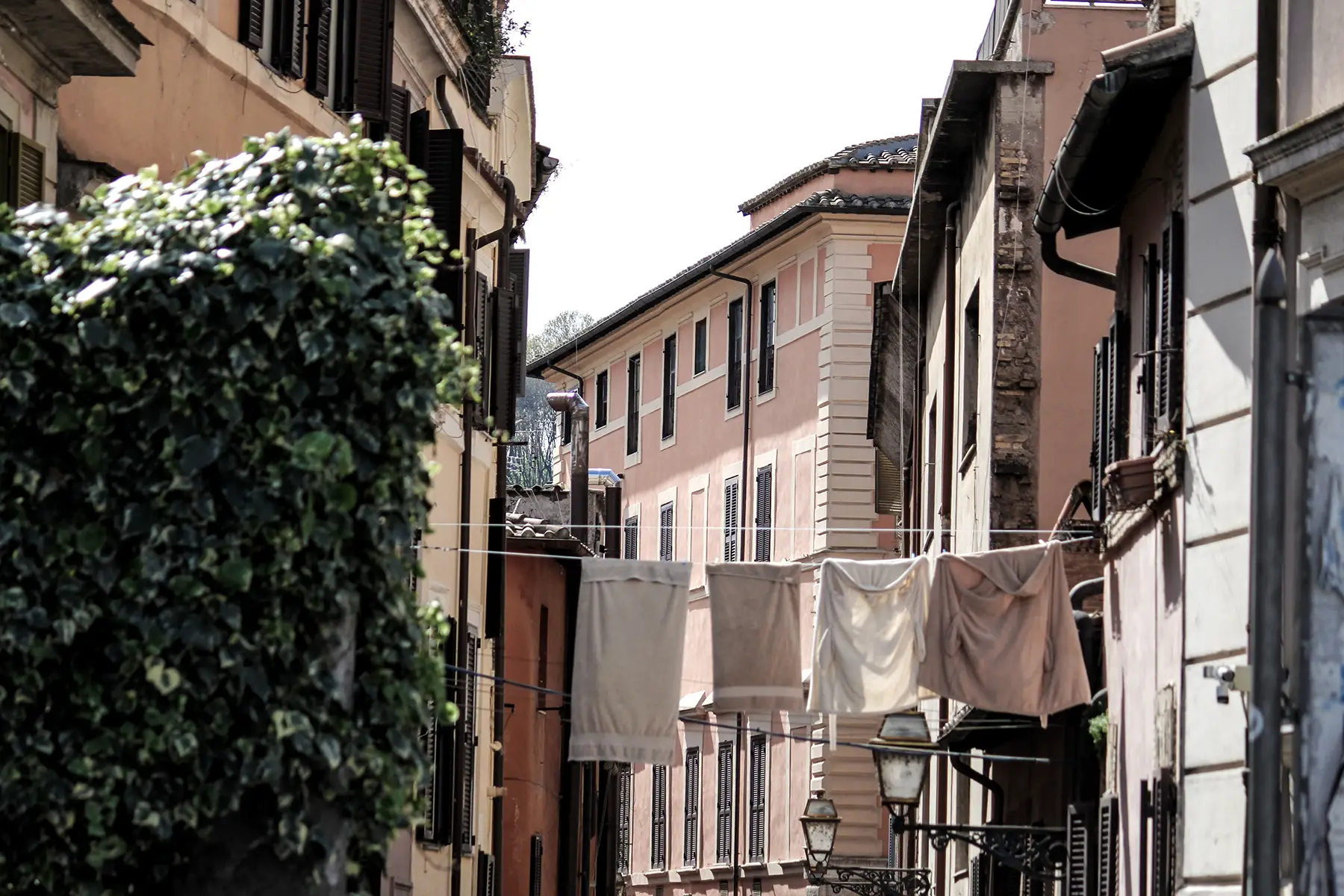
Since the area is quite famous and central, there are many forms of public transportation, including trams and buses. Trastevere is walkable, and you won’t need a car to get around. The neighborhood has playgrounds and kid-friendly activities such as the Botanical Gardens. Schools and medical facilities are available throughout the neighborhood as well, making Trastevere a great area for families.
If you are looking for a large international community, Trastevere is a great place to live. Even in ancient times, this neighborhood always had a huge international community, and today, this is still the case. There are, however, a couple of drawbacks to Travestere: in some busier parts, it can get noisy. In addition, the housing cost is higher than average. Renting an apartment in Trastevere can cost around €26 per m2 each month.
Testaccio
If you are looking for an affordable neighborhood near the city center, consider renting or buying in Testaccio. Close to Trastevere, it has a large community of expats and professionals. Walking along the streets of Testaccio, you will see colorful street art, museums, restaurants, pubs, and more.
The most famous museum in the area is Macro. This contemporary art museum also has numerous workshops, so it’s a great area to live for creative people. There is also a large covered market selling fresh produce, local foods, and handmade goods. The market also has a children’s play area nearby, making it a family-friendly area.
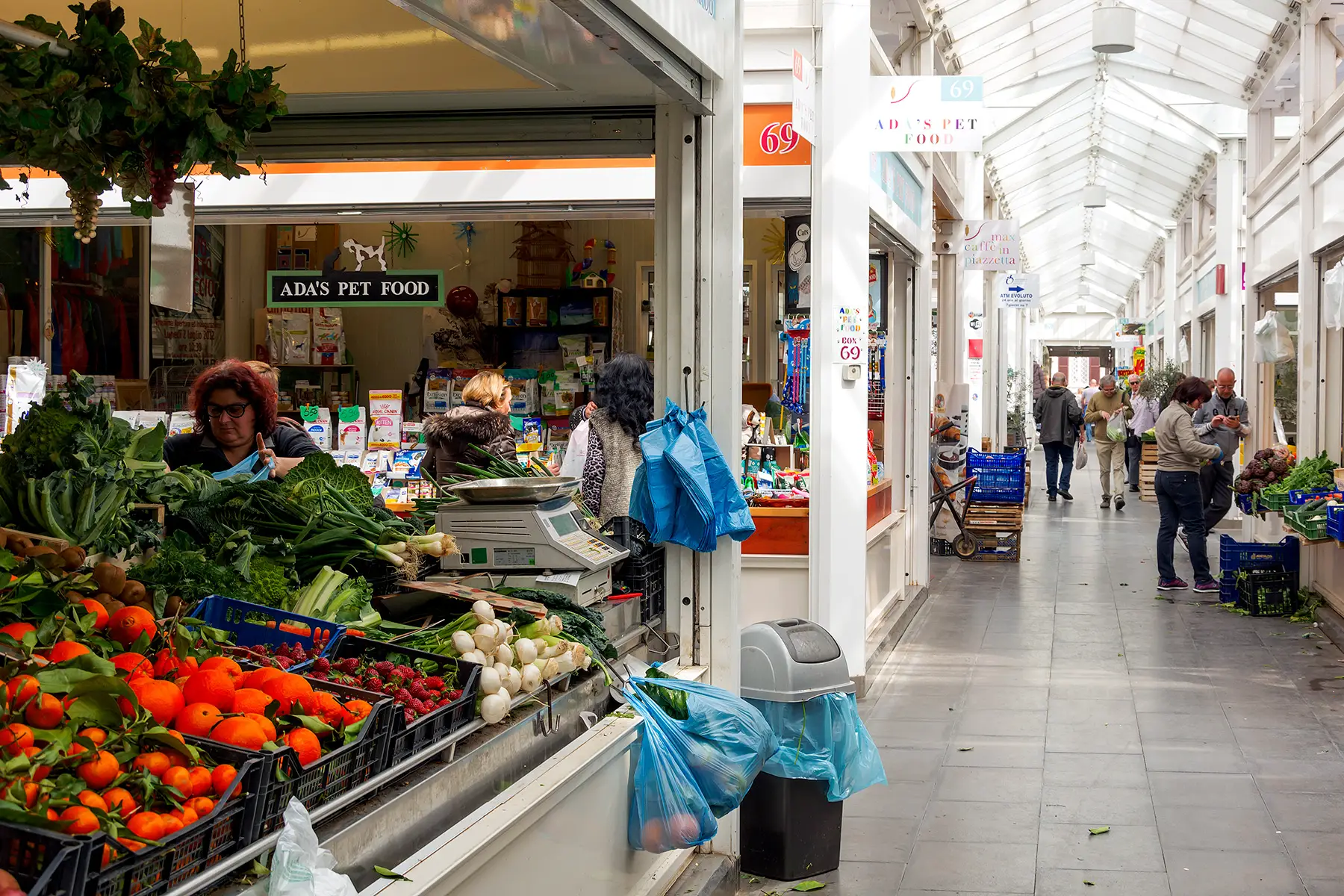
Testaccio isn’t touristy, so you will find many locals living here. Although at first glance, it’s less picturesque than famous neighborhoods like Trastevere or the centro storico, it has a unique charm.
Because it is located near the city center, public transportation is widely available. You’ll also find schools, medical facilities, shops, and anything you might need to live comfortably. Apartments in Testaccio are more affordable than in the city center on average, costing around €19 per m2 per month for an apartment rental.
Prati
If you are looking for quiet and safe housing in Rome, check out Prati. This elegant, modern neighborhood is located near Trastevere, on the same side of the Tiber and close to the Vatican. This area is close to the bustling city center, but it’s mainly known for being a residential area and business hot spot. You will also find the Palazzo di Giustizia, where the Supreme Court and tribunals are located, making it a hub for lawyers. Prati is also famous for its high-end shopping and amazing Roman food.
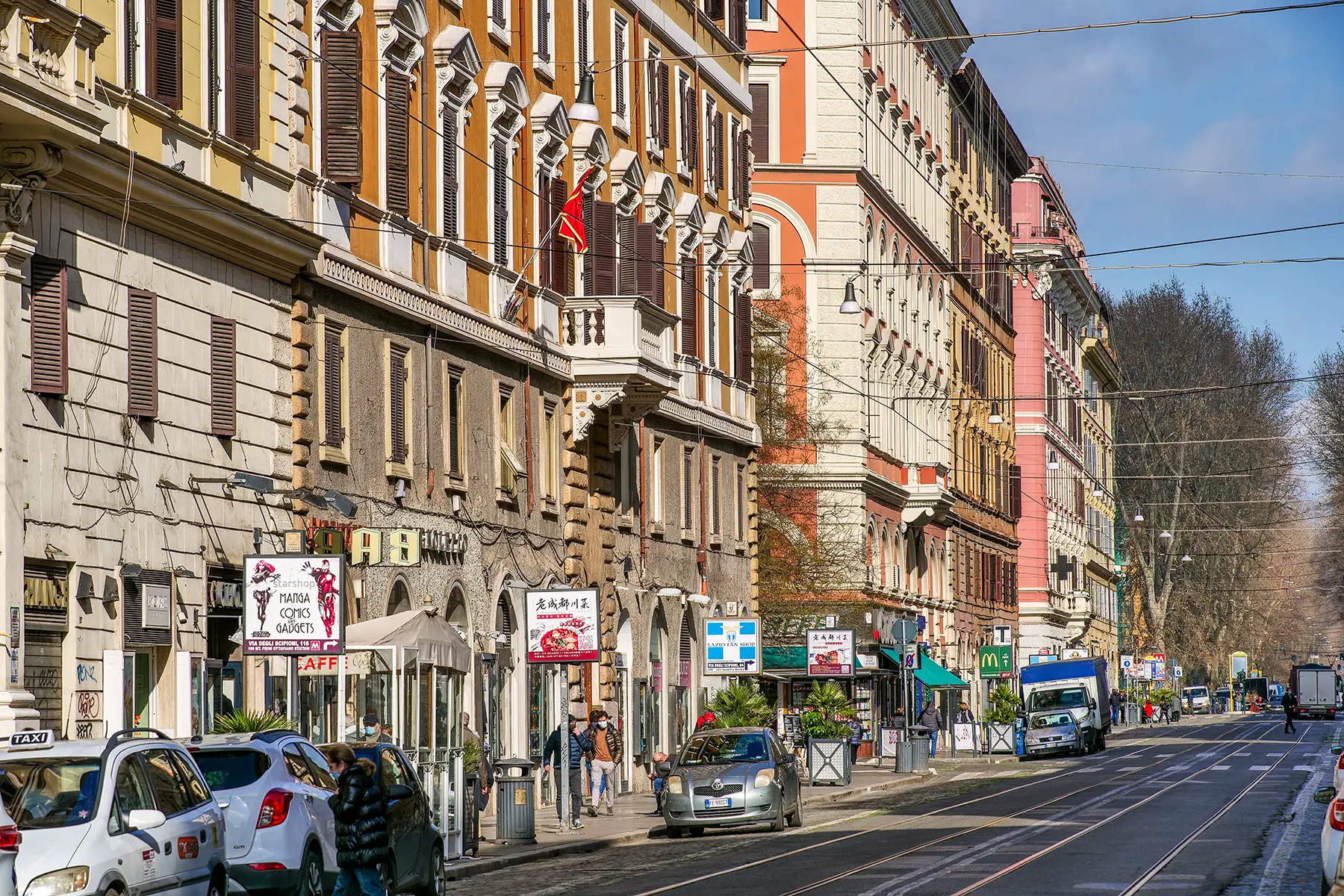
Fortunately for those who want a quiet life, Prati is mostly a center for work and living, meaning it generally has fewer tourists. There are, of course, restaurants, bars, and cafes throughout the neighborhood, but the nightlife is less vibrant than in other parts of the city.
If you move to Prati, you will find everything you need nearby: primary and secondary schools, doctors’ clinics, and activities for kids. It also has good public transit connections, just like elsewhere in Rome. The neighborhood is very safe, so it is a good choice for families, but renting or buying can be expensive.
Centro Storico
If you love history and art and want to be at the center of the Eternal City, the Centro Storico might be your best choice when deciding where to live in Rome. Although Rome is a huge city, its city center isn’t so big in proportion.
Those lucky enough to reside there have the unique experience of living next to some of the world’s most famous monuments, such as the Colosseum, Trevi Fountain, and Castel Sant’Angelo. This neighborhood is best if you want to immerse yourself in Rome’s history and art on a daily basis.
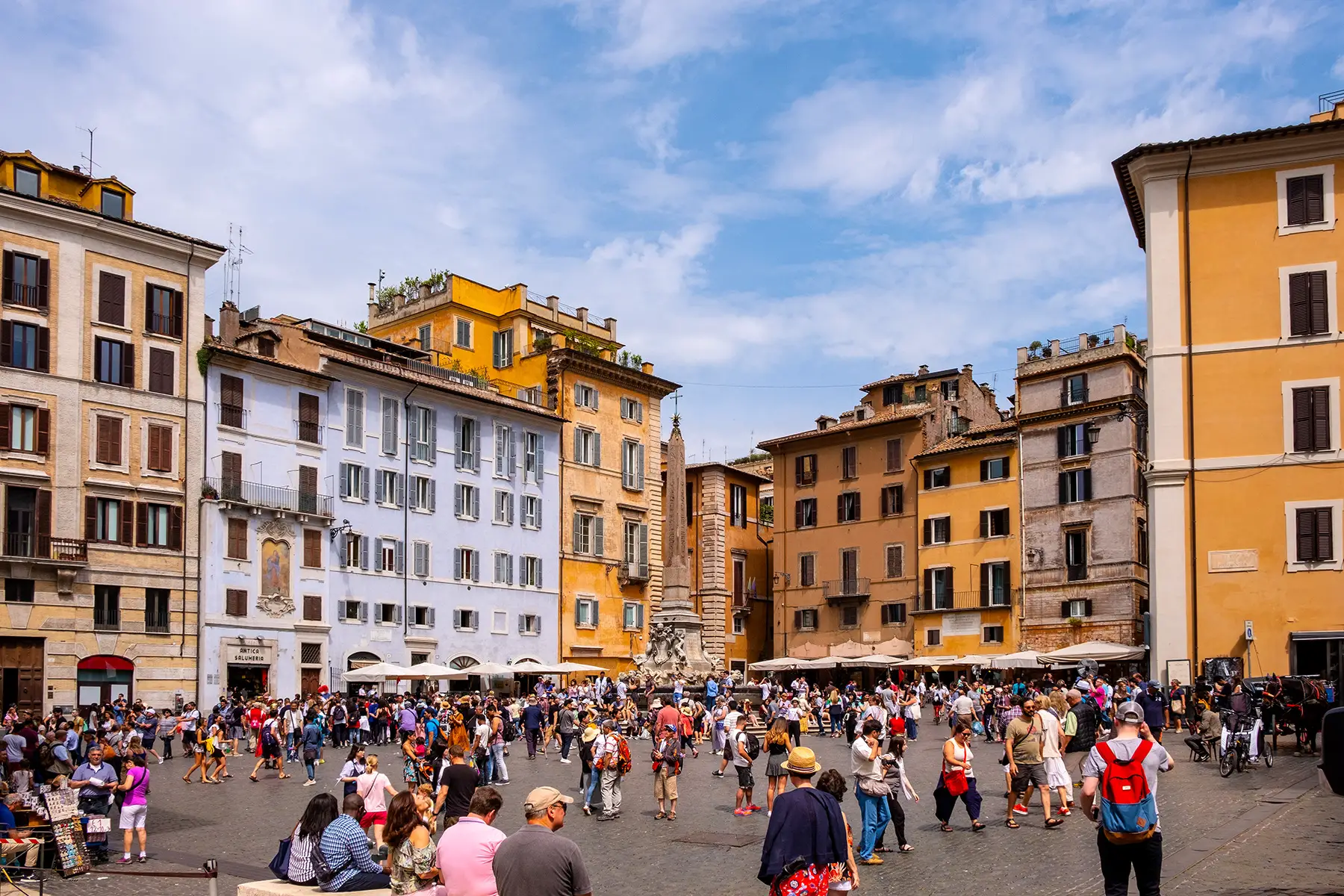
As the city center has so many shops, cultural activities, restaurants, and nightlife, the area is extremely popular with tourists. Short-term rentals, such as Airbnb, are more popular in this neighborhood since it’s a perfect place for vacationers and digital nomads to make their temporary home.
Public transportation, such as the metro, bus, and tram, travel throughout the center, making it easy to move around. Driving, however, is less popular. Many central areas have a Zona Traffico Limitato (ZTL), denying access to cars unless with special permission. Residents can apply for a permit to have a car, but people within the central area usually walk or take public transport.
Many people working in tourism commute to this area for work, as it’s the main hub for Rome’s attractions. Families may want to live in a less chaotic area, away from the enormous number of tourists. Furthermore, prices are sky-high, especially for properties close to the monuments. If your priority is living somewhere unique, however, surrounded by art and history, and you don’t mind paying a bit more for housing, then the city center might be the perfect place to live.
Aventino
Aventino is a quiet and picturesque central neighborhood on the city’s southernmost seventh hill. If you want to be close to the city center but still enjoy the tranquility of a less busy area, this neighborhood offers just that. Aventino’s cobblestone streets, colorful buildings, and medieval churches make it an enchanting place to live. Its transit links are good, but it’s also quite walkable.
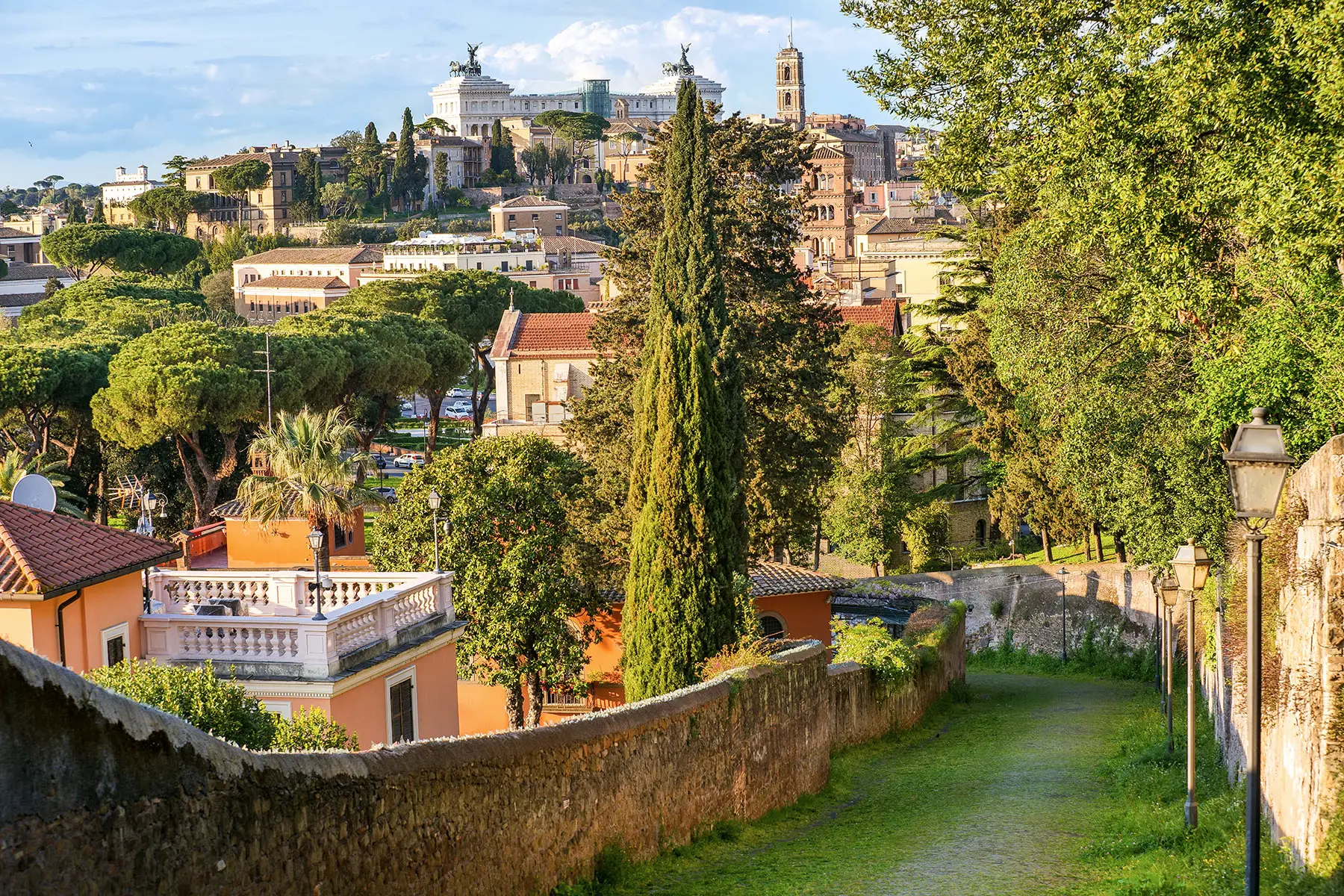
The area is also residential and peaceful, with plenty of parks. One of the most famous, Il Giardino degli Aranci, sits on top of the hill overlooking the city. Here, you will find the famous buco della serratura, a keyhole where if you look inside, you can see St. Stephen’s Cathedral.
Despite being a calm neighborhood, Aventino has all the facilities you’ll ever need – restaurants, shops, doctors, and more. Furthermore, expat families may want to settle down in Aventino due to the large number of international schools available nearby, such as St. Stephen’s. In fact, you will find a large international community because of this. If you wish to settle down in this picturesque neighborhood, houses to rent cost, on average, €20 per m2.
Monteverde
If you want to live in Rome, but don’t want the chaos of the city center, look into Monteverde. Located near Trastevere on Gianicolo Hill, this relaxed, green neighborhood is a family-friendly option for living in Rome.
Here, you will find the city’s largest landscaped public park, Villa Pamphilj, the perfect place to roam while soaking in Rome’s delightful weather. There is, however, one downside to living here – the entire neighborhood is on a hill, so walking around can be tiring.
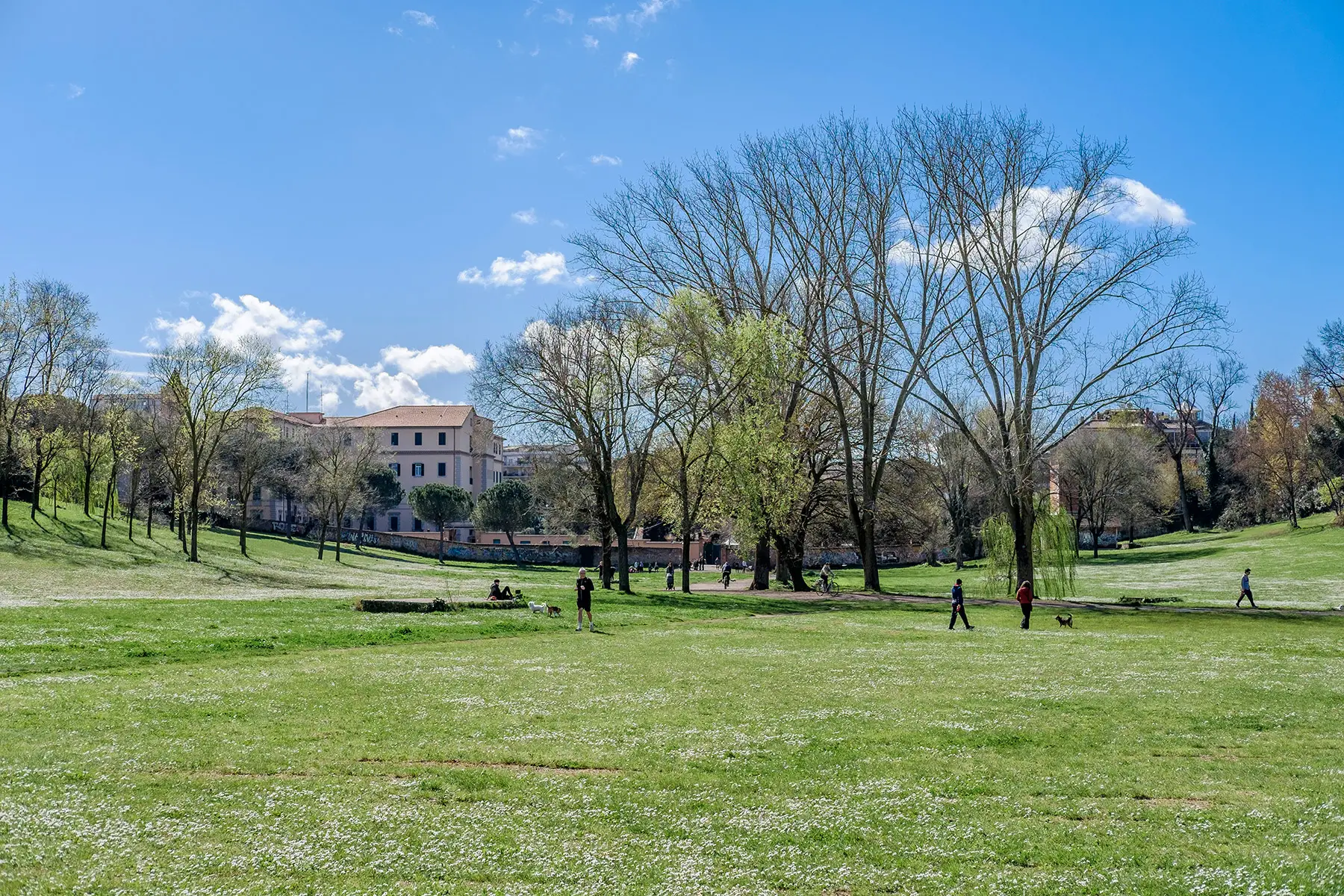
The neighborhood is divided into two sections. Monteverde Vecchio is the older part of the area with historic buildings and more expensive housing. You might want to live here if you are willing to spend more on picturesque buildings and views. The other half of the area, Monteverde Nuovo, is an extension of the neighborhood and has newer homes. While less scenic, the modern area of Monteverde offers more affordable housing. Apartments to rent in this neighborhood cost around €14 per m2 per month.
EUR
EUR, a recent addition to Rome’s neighborhoods, could be considered the ‘opposite’ of the Centro Storico. This area, which gets its name from Esposizione Universale Roma (Universal Exposition Rome), was originally built in 1942 to host the World Expo Fair, which never happened due to World War II.
Over the years, this area evolved into a large business hot spot and residential area. Although EUR is quite far from the city center (around 3 kilometers), it is well connected via metro line B, allowing people to commute in and out of the area quickly.
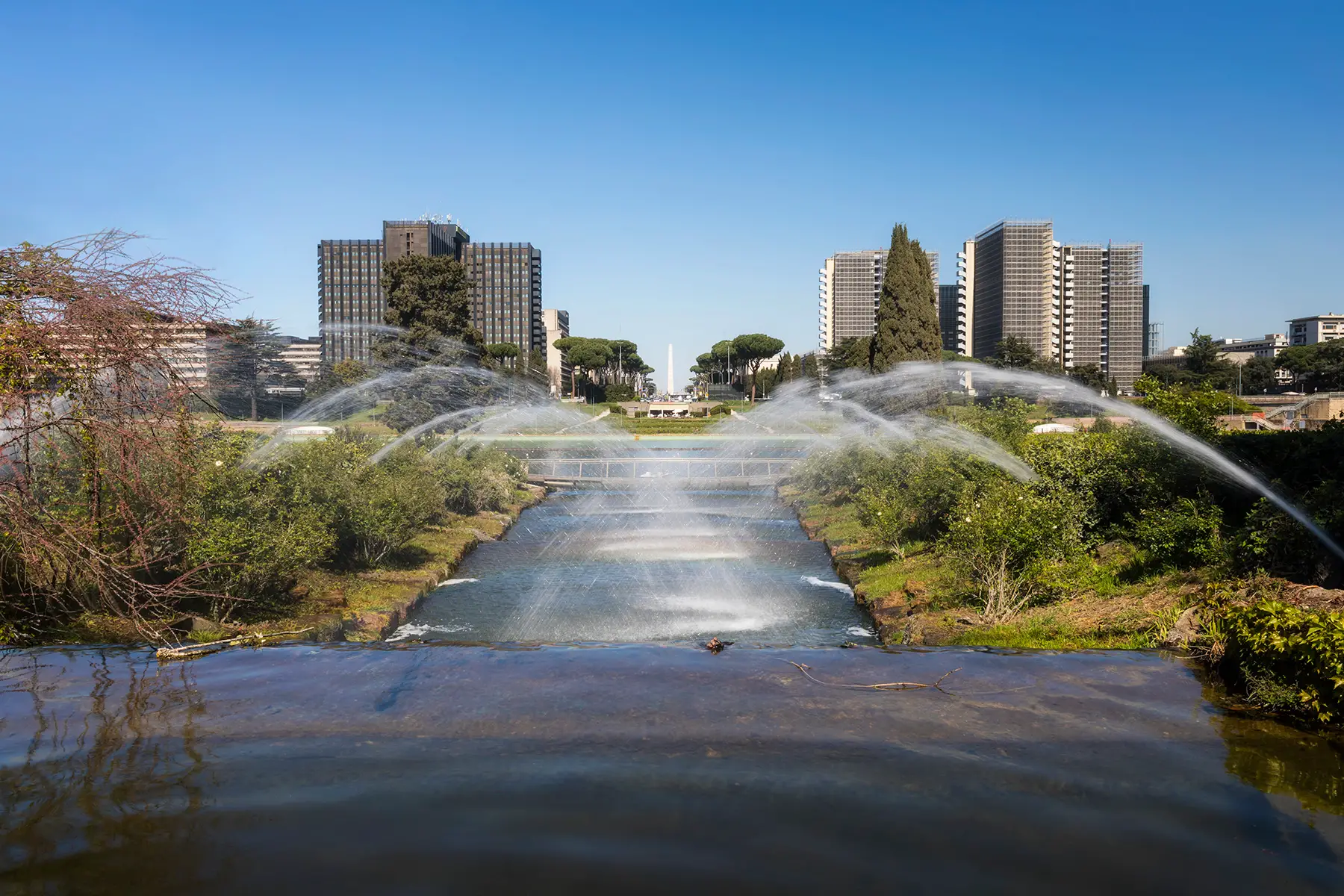
EUR consists of a mix of greenery and modern architecture. On the one hand, you can find the Parco Centrale del Lago, or Laghetto, which has a lake, playground, boat rentals, and cafés. The Waterfall Gardens (Giardino delle Cascate) are another highlight and reason why nature lovers will be happy in this area.
On the other hand, EUR has many modern amenities. For example, there are many museums in the area, such as the Museum of Roman Civilization, housed in an impressive 1940s structure. Along with all the usual facilities, there is also a large mall, Euroma2.
Overall, EUR is a great place to live if you want a modern city vibe, greenery, shopping, and easy metro access to the historic city center. The district is also family-friendly, thanks to its parks and activities. The average monthly rental cost per m2 is around €14 per month.
Ponte Milvio
This vibrant and fun neighborhood gets its name from the Ponte Milvio Bridge, a stunning sight in the heart of Rome. The Ponte Milvio District is also known as the Olympic District, as the biggest stadium in Rome is about a 20-minute walk away.
This area is full of cute shops and trendy spots, and it has great nightlife. On Saturday night, you’ll find young locals strolling around outside or hanging out in one of the many restaurants or pubs. On the weekends, Romans love to wander the streets around the bridge, drink a leisurely coffee, or visit the market.
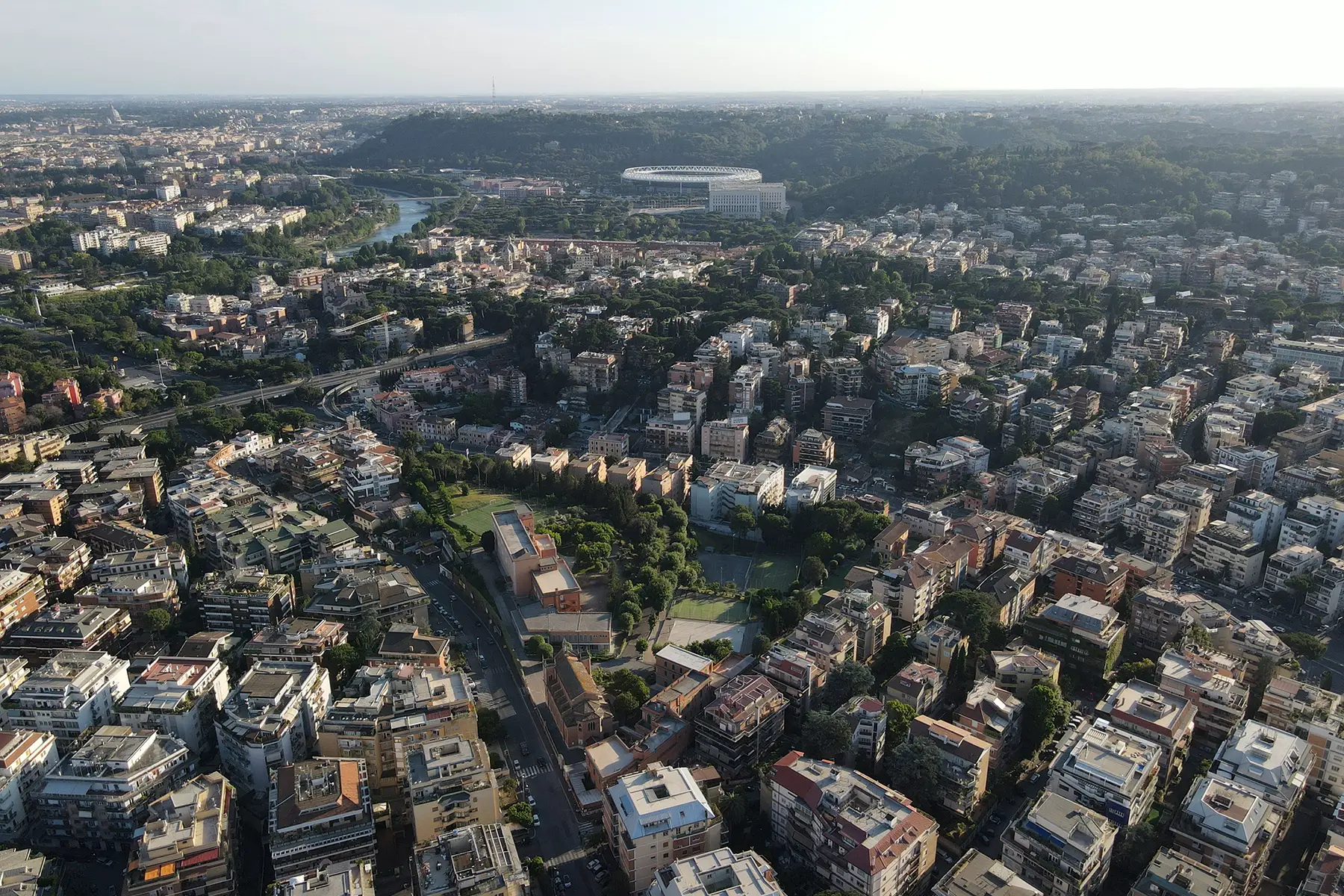
Ponte Milvio is a great area for students or young professionals, as although it is very lively and close to the center, it is also more affordable than many areas in Rome. Rent starts at just €12 each month per m2 but goes up to around €15 on average. Families will also find Ponte Milvio charming, but there are other neighborhoods that are quieter, with more parks and child-friendly facilities.
The area is served by public transportation: buses and a tram. If live here or work nearby, you will have no problem getting to and from the neighborhood. Fortunately, Ponte Milvio also has schools, a small mall, doctors, offices, and much more. The neighborhood is home to many locals, so it’s a perfect place to settle down if you want to practice your Italian and immerse yourself in the culture.
Trieste/Salario
The Trieste neighborhood, in the northern part of Rome, is a wonderful area to live. It’s also fantastic for learning the Italian language, as it’s a favorite among locals and a little further out of the city center. Although a few tourists come to Trieste to visit attractions such as the Priscilla Catacombs, the neighborhood feels like its own village, a completely separate city from central Rome. If you want to feel connected to history in a place with fewer tourists, Trieste might be the area for you.
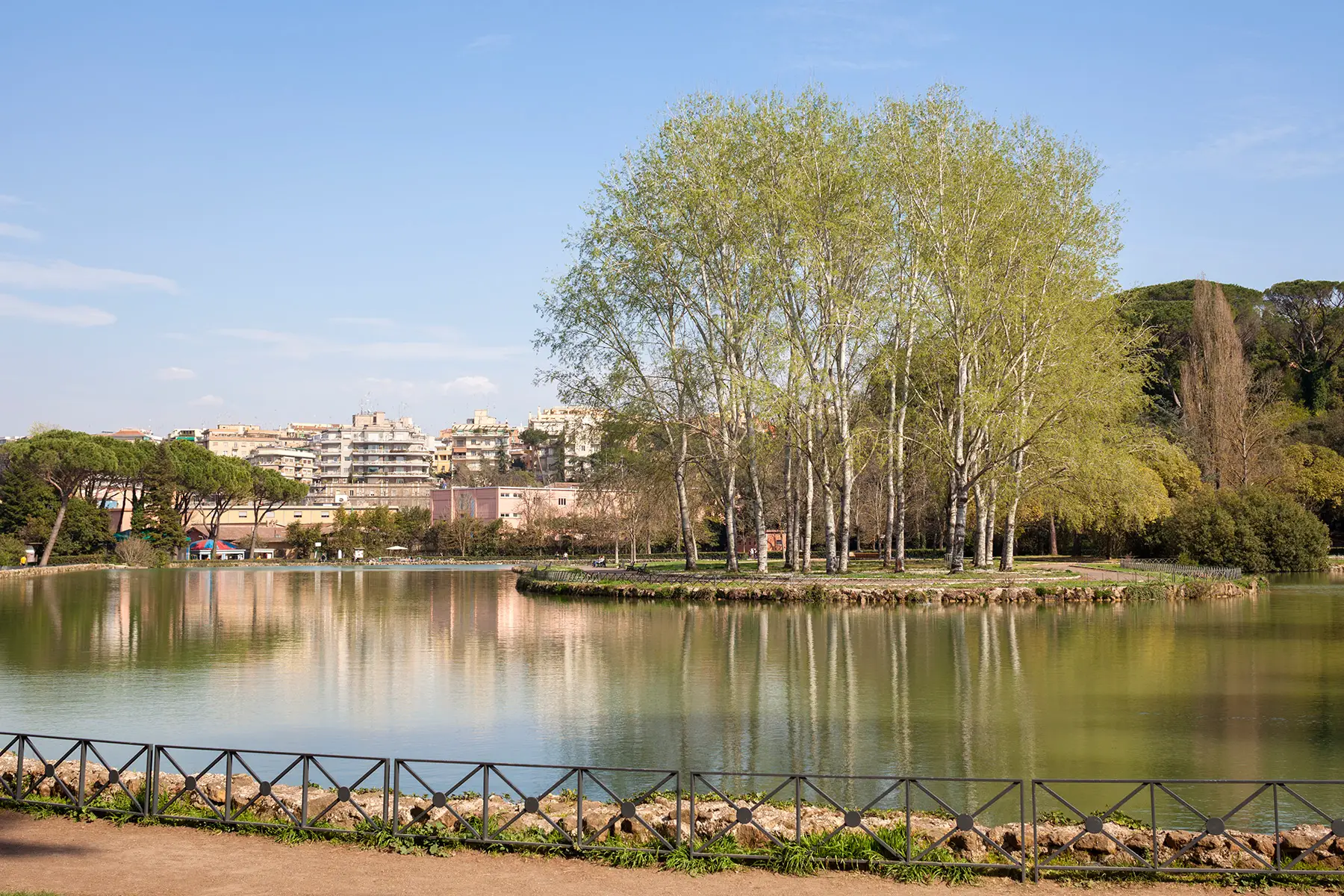
One of the most gorgeous parts of Trieste, which borders the Parioli neighborhood, is an immense park called Villa Ada. This park is one of the largest in the city, and is worth a visit, even though it is less well known than Villa Borghese, for example. Here, you’ll find playgrounds, outdoor exercise equipment, events for children, and more. Indeed, it’s a very family-friendly area with its natural spaces and schools.
Trieste has everything you need in a neighborhood, and is also well-connected by buses and the metro. You can also drive around the area, and there are multiple parking garages. However, as it’s such a desirable area, housing doesn’t come cheap. The monthly rental cost per m2 is around €17 per square meter.
Neighborhoods to avoid in Rome
Rome tends to be a safe city, but some districts are perceived as less secure than others. In general, big cities in Italy have higher crime rates, with Milan being the province with the most crimes. However, even in these larger cities, crime rates have been falling slightly in recent years, and Rome ranks seventh in the country for reported crimes, at just under 6,000 per 100,000 inhabitants in 2021.
That said, security is a hot topic in some areas, especially in the wake of recent incidents. Although statistics for crime rates in each neighborhood are hard to come by, a 2015 survey suggested that locals found the following districts the least safe:
- Esquilino
- Corviale
- San Basilio
- Torpignattara
- Ostia
- Tor Bella Monaca
- San Basilio
- Areas around the stations like Stazione Termini, Ostiense, Tiburtina
Tips on choosing a neighborhood in Rome
When researching a neighborhood, consider your commute to work, the best local schools, and your budget. While Rome does have an extensive public transportation system, the city is so big that it can take over an hour to get from point A to point B. If possible, try to find housing in Rome as close as you can to facilities, schools, and work.
Safety is also an important aspect to look at when renting or buying in Rome, as some neighborhoods are more dangerous than others. If you can, visit the neighborhoods you want to rent in beforehand. This way, you can get a feel for the area and decide if it’s the right choice for you. Finally, reach out to other newcomers through groups on Facebook to ask for their advice on moving to Rome.
Useful resources
- Roma Capitale – Official website of the city of Rome
- Expats in Rome – a Facebook group for internationals living in the Italian capital
